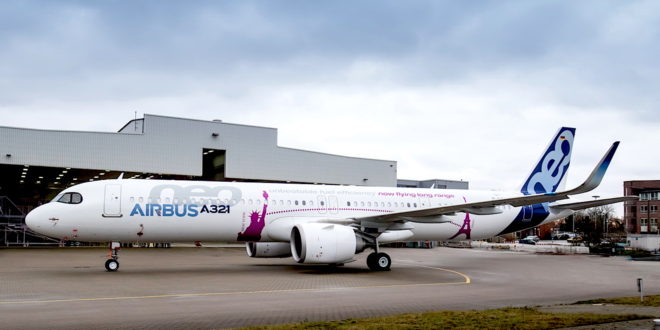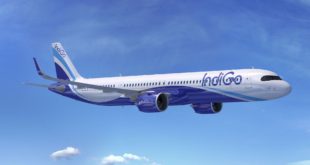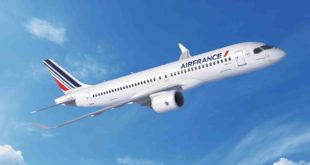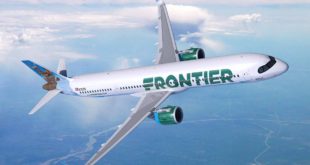European airframer Airbus has rolled out the first A321neo ACF (Airbus Cabin Flex) aircraft which can seat up to 240 passengers. The airframe powered by CFM LEAP-1A engines will now begin testing, first on the ground and then in-flight. The first delivery of the A321neo ACF is scheduled for mid-2018.
The ACF concept was introduced in July 2014. It uses new slim seats which decreases seat pitch to 28 inches, and relocated ultra-slim rear lavatories allowing addition of more rows of seats. The ACF allows airlines to seat up to 189 passengers in the A320 frame (up from 180) and up to 240 passengers in the A321 frame (up from 220).
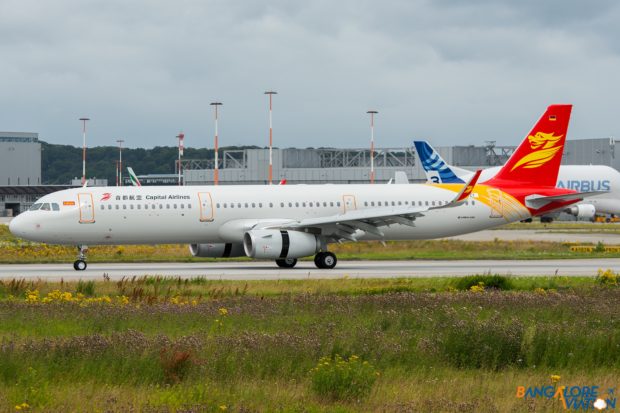
Compared to a regular A321 (pictured above) or A321neo, the A321neo ACF incorporates changes to the airframe. This includes removal of the front doors (door 2) located just ahead of the wing, adding of over-wing exits, and moving the doors located just behind the wing (door 3), an extra four frames back. Airlines can de-activate these doors too.
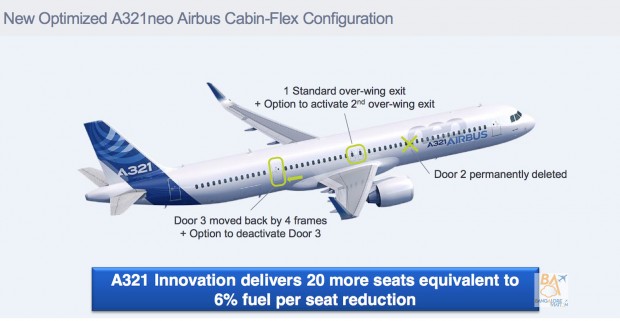
Changes inside the cabin include relocating the rear toilets in to what used to be part of the rear galley originally offered under the Airbus Space Flex banner.
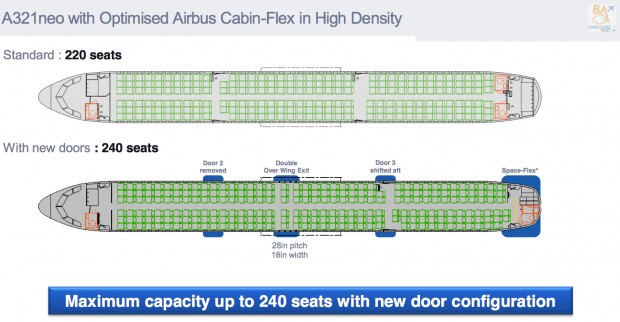
Default design from 2020
The A321neo ACF is available as an option today, but will become standard for all A321neos around 2020.
A321LR Transatlantic
The A321neo ACF is also the base design for the transatlantic capable A321LR Long Range variant. The A321LR 4,000nm range ability of the is reflected in the livery with the Statue of Liberty and the Eiffel Tower. The first delivery of an A321LR is targeted for Q4 2018.
The A321LR will replace the ageing fleet of Boeing 757s which operate the transatlantic routes of many carriers including American Airlines, United, Delta and others.
 Bangalore Aviation News, Reviews, Analysis and opinions of Indian Aviation
Bangalore Aviation News, Reviews, Analysis and opinions of Indian Aviation
